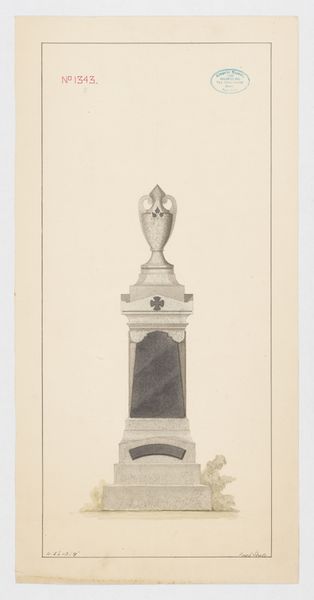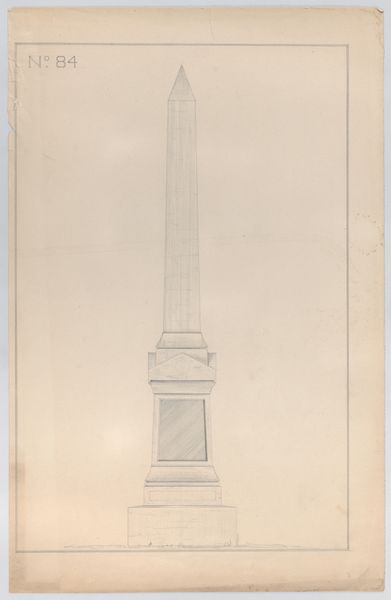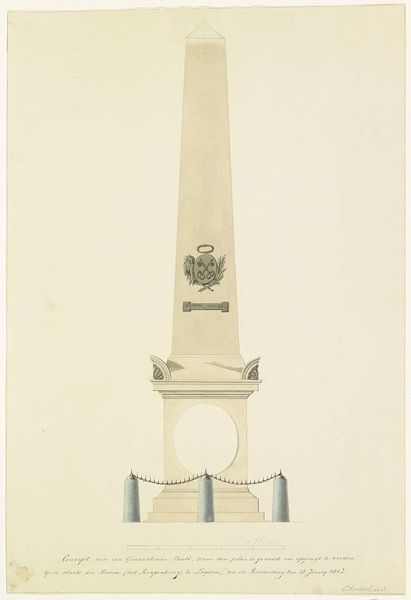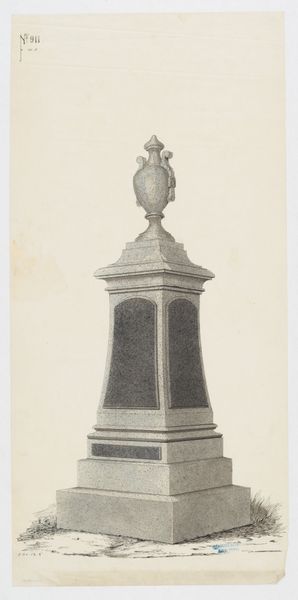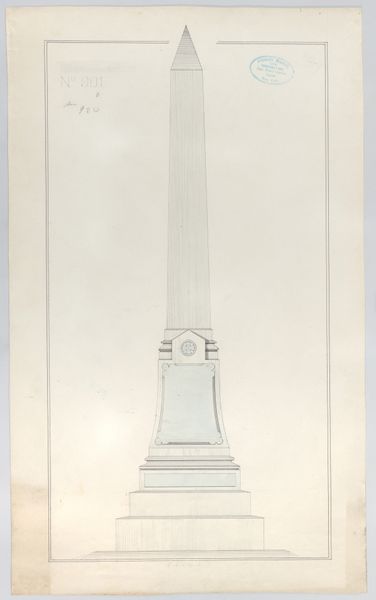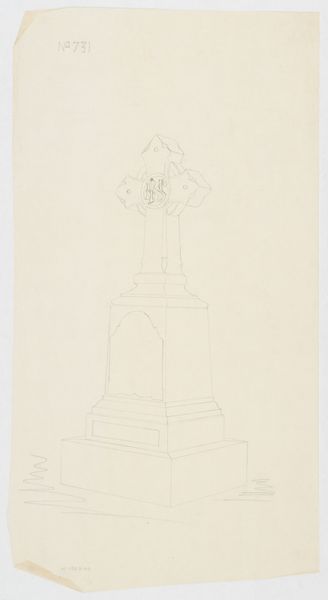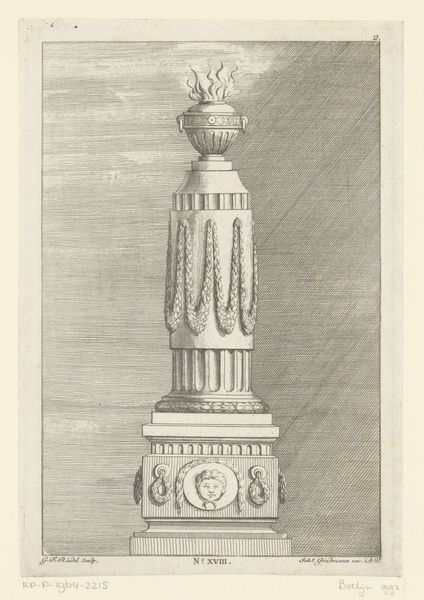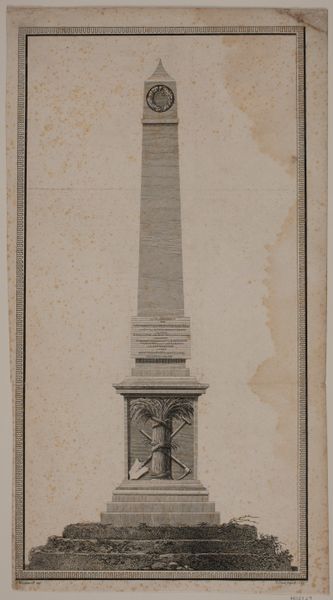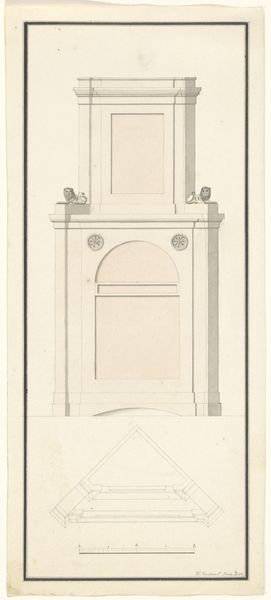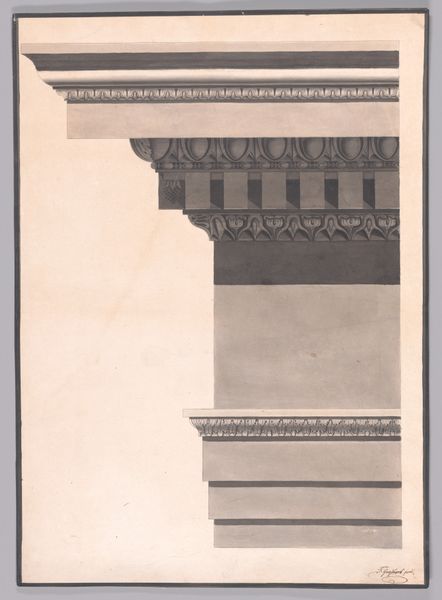
drawing, print
#
drawing
#
neoclacissism
# print
#
landscape
#
form
#
geometric
#
line
#
history-painting
Dimensions: Sheet: 22 13/16 × 10 15/16 in. (58 × 27.8 cm)
Copyright: Public Domain
Editor: So this is "Obelisk Grave Monument, No. 1322", dating from between 1840 and 1880. It's a drawing and print, housed here at the Met. I’m struck by its almost sterile precision – it feels less like a memorial and more like an architectural plan. What jumps out at you? Curator: The rendering invites a focus on the industrial processes necessary for such monumental constructions. Consider the quarries, the transportation networks, the skilled labor involved in shaping stone at this scale during that era. The clean lines you noticed aren't just aesthetic; they reflect an emerging industrial capability and perhaps a shift in attitudes toward death and remembrance itself. Editor: That’s interesting, the connection to industrial processes. So it's not just about neoclassical form, but also the means to *create* that form? Curator: Exactly. Neoclassicism itself was supported and disseminated through material processes: consider the printing technologies required to circulate these designs as models for aspiring sculptors. Each line and form present here speaks to a web of production and distribution. Editor: I see, so it’s about looking past the face value of the artwork, beyond just form. So what does it tell us? The efficiency in its making, I mean? Curator: Perhaps it highlights a tension: a desire for timeless grandeur achieved through increasingly mechanized and standardized methods. How might the rise of industrial capitalism influence the perception and memorialization of death in the mid-19th century? Editor: So, it's not just a tombstone blueprint. It’s an indicator for larger cultural and economic shifts toward mass production? That's certainly given me a completely different way of viewing seemingly simple artworks! Curator: Precisely. We need to look at its production in the context of those large movements of labor and resource extraction in the 19th Century. Now I have to rethink it, too!
Comments
No comments
Be the first to comment and join the conversation on the ultimate creative platform.

